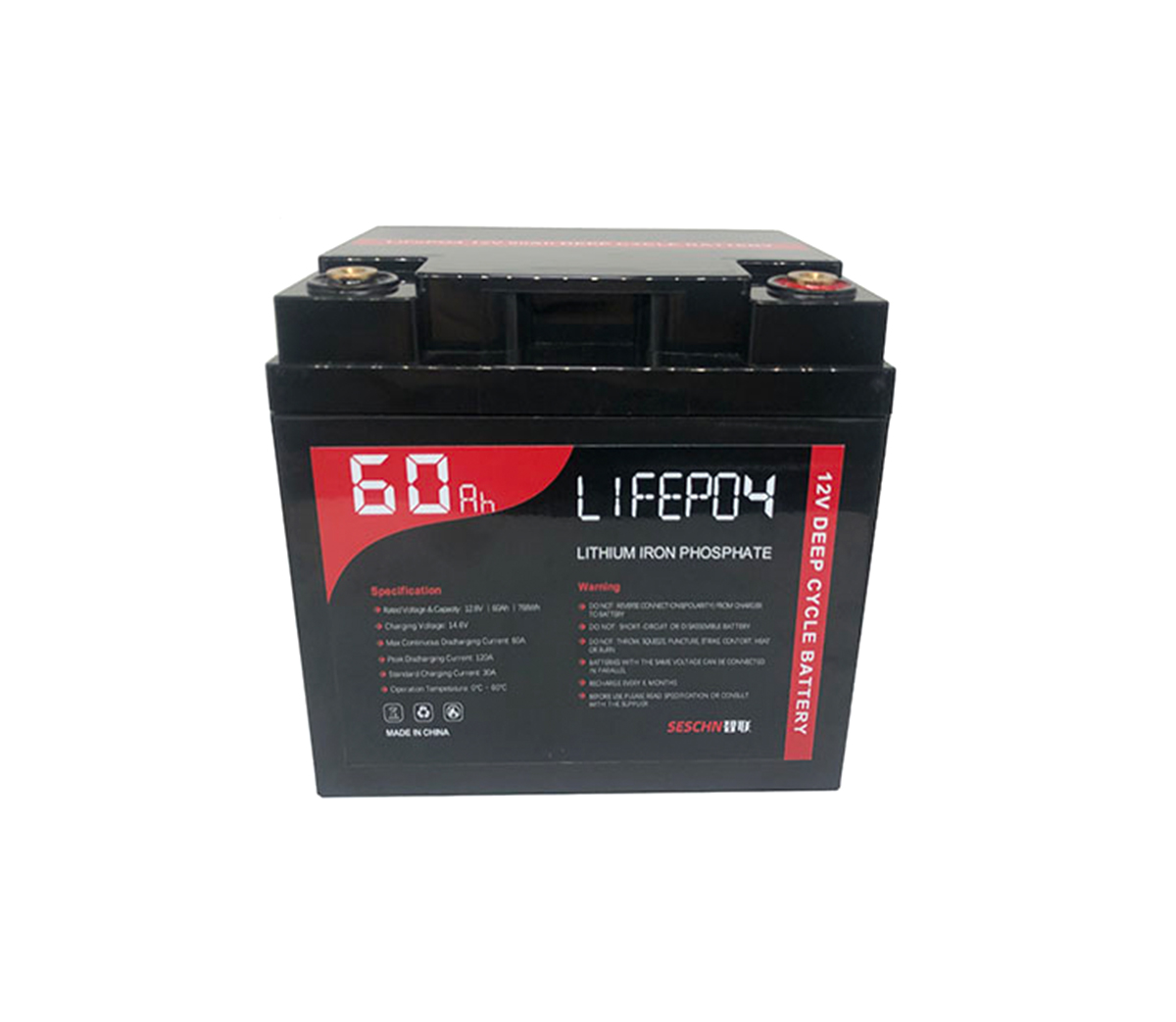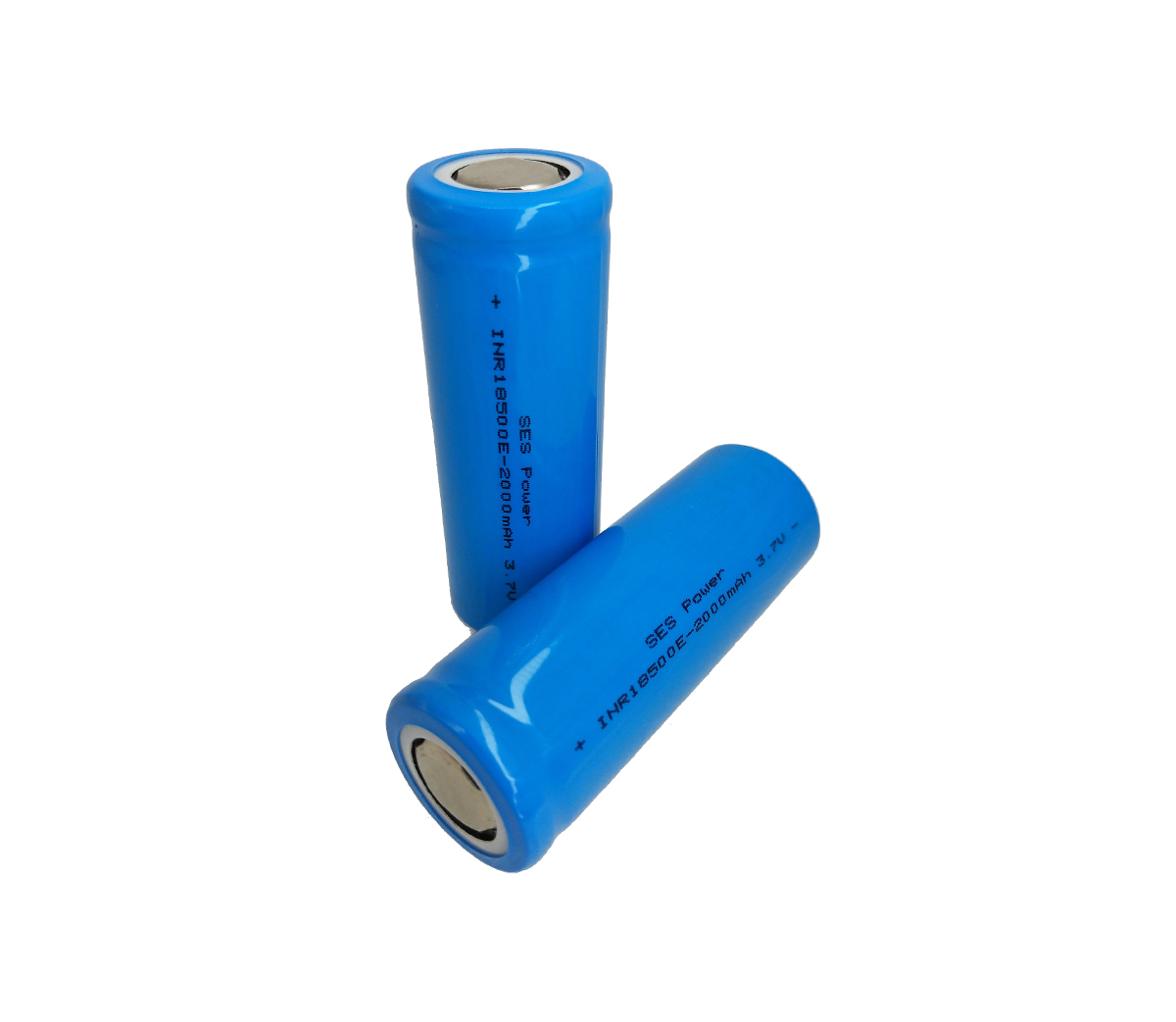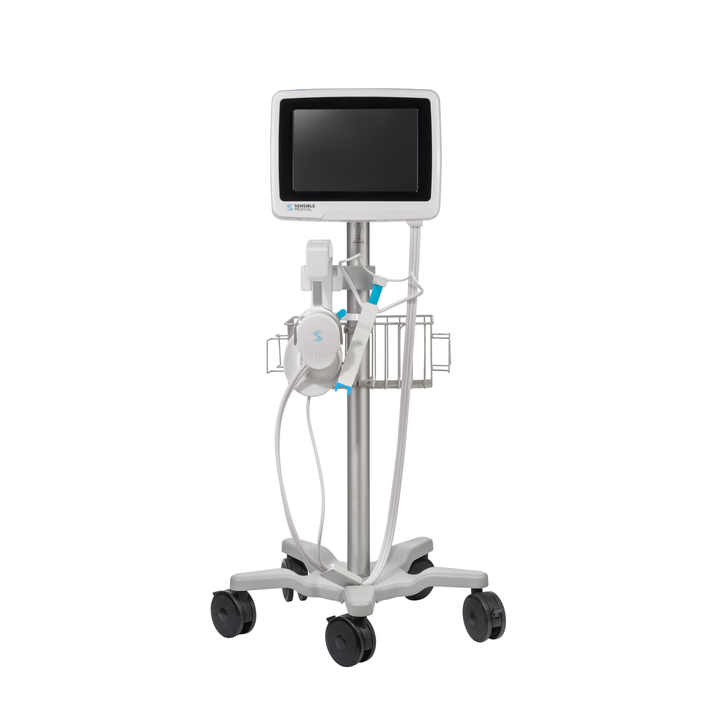How is the development status of lithium titanate battery technology at
home and abroad?
Internationally leading companies in the research and industrialization of
lithium titanate materials include the American Ao Titanium Nano Technology
Company, Japan's Ishihara Industry Co., Ltd., and the British Johnson Matthey
Corporation.
Since the industrialization of lithium-ion batteries in 1991, the negative
electrode material of the battery has been dominated by graphite. Lithium
titanate, as a new type of lithium-ion battery's negative electrode material,
has received attention due to its many excellent properties since the late
1990s. For example, the crystal structure of lithium titanate materials can
maintain a high degree of stability during the inlay and deintercalation process
of lithium ions, and the lattice constant changes very little (volume change
This "zero strain" electrode material greatly extends the cycle life of
lithium titanate batteries. Lithium titanate has a three-dimensional lithium ion
diffusion channel unique to the spinel structure, and has the advantages of
excellent power characteristics and good high and low temperature performance.
Compared with carbon anode materials, the potential of lithium titanate is
higher (1.55V higher than that of lithium metal), which results in that the
solid-liquid layer that usually grows on the surface of electrolyte and carbon
anode is basically not formed on the surface of lithium titanate. .
More importantly, it is difficult to generate lithium dendrites on the
surface of lithium titanate within the voltage range of normal battery use. This
largely eliminates the possibility of a short circuit formed by lithium
dendrites inside the battery. Therefore, the safety of lithium-ion batteries
with lithium titanate as the negative electrode is the safest among all types of
lithium-ion batteries that I have seen so far.
Most people in the industry have heard that lithium titanate replaces
graphite as the negative electrode material of lithium batteries with a cycle
life of tens of thousands of times, which is much higher than the common
traditional lithium-ion battery, and it will die after only a few thousand
cycles.
Because most professional lithium battery professionals have never actually
made lithium titanate battery products, or have just done it a few times and
have encountered difficulties and ended up in a hurry. So they couldn't calm
down and think carefully, why most of the perfect traditional lithium-ion
batteries can only complete 1000 to 2000 charge and discharge cycle life?
Does the fundamental reason for the short cycle life of traditional
lithium-ion batteries stem from one of the basic components-graphite anodes that
are overwhelmed? Once the graphite anodes are replaced with spinel-type lithium
titanate anodes, the same lithium-ion battery chemistry is basically the same
The system can be recycled to tens of thousands or even hundreds of thousands of
times.
In addition, when many people talk about the low energy density of lithium
titanate batteries, they ignore a simple and important fact: that is the long
cycle life, extraordinary safety, and superiority of lithium titanate batteries.
Power characteristics and good economy. These characteristics will be an
important cornerstone for the large-scale lithium energy storage industry that
is currently emerging.
In the past 10 years, research on lithium titanate battery technology at
home and abroad can be described as turbulent. Its industrial chain can be
divided into the preparation of lithium titanate materials, the integration of
lithium titanate battery production and lithium titanate battery systems, and
their applications in the electric vehicle and energy storage markets.
1. Lithium titanate material
Internationally leading companies in the research and industrialization of
lithium titanate materials include the American Ao Titanium Nano Technology
Company, Japan's Ishihara Industry Co., Ltd., and the British Johnson Matthey
Corporation. Among them, the lithium titanate material produced by the United
States Austrian Titanium has excellent performance in terms of rate, safety,
long life, high and low temperature. However, the production cost is too high
due to the excessively lengthy and detailed production method, which makes it
difficult to commercialize.
Ishihara Industries is one of the largest titanium dioxide manufacturers in
Asia. The company has production bases in Japan, Singapore, and Taiwan. Ishihara
Industry has made full use of its abundant raw material resources and
successfully developed a variety of low-cost, high-rate, and different particle
size lithium titanate products by wet process. Products with similar performance
have a greater advantage in price compared to the American Aoti's lithium
titanate materials, but they are slightly inferior to Chinese domestic products.
Johnson Matthey has taken over materials such as lithium iron phosphate owned by
the former German Southern Chemical Company, but has insufficient investment in
the development and production of lithium titanate materials, and the product
quality is difficult to stabilize.
There have been many domestic mass production of lithium titanate
materials, such as Xingneng New Materials Co., Ltd., Zhuhai Yinlong New Energy
Co., Ltd., Huzhou Weihong Power Co., Ltd., Shenzhen Beiterui New Energy
Materials Co., Ltd., Hunan Shan Shan New Materials Co., Ltd. and many smaller
lithium titanate manufacturers around Shenzhen.
Xingneng is a manufacturer specializing in the production of lithium
titanate materials, with an annual production capacity of 3000t. The lithium
titanate production process has customer adaptability and stability. It can be
flexibly adjusted without changing the existing production lines and equipment
to produce suitable products. Lithium titanate required by customers, and to
maintain the stability of product technical indicators. Relying on the upstream
lithium ore and titanium ore resources, Xingneng can realize the coordinated
production from raw ore to final materials, which can realize the performance
improvement and cost reduction of lithium titanate products, and avoid the
impact of fluctuations in the raw material market.
In 2011, Zhuhai Yinlong completed the acquisition of 53.6% of the shares of
the American Austrian Titanium Nanotechnology Company, thus becoming one of the
few companies in China that simultaneously possesses lithium titanate material
preparation, battery production, lithium titanate electric vehicles, energy
storage systems, and frequency modulation. It has a number of core technologies
and more than 30 patents for peak shaving and other applications.
At present, Northern Austrian Titanium Nanotechnology Co., Ltd. ("Northern
Austrian Titanium") has an annual production capacity of 100t of lithium
titanate materials and provides high-quality nano-level lithium titanate for
Northern Austrian Titanium and Zhuhai Yinlong. Zhuhai Yinlong New Energy has
also carried out a strategic cooperation with Ishihara Industry on the research
and development of new lithium titanate materials. The cost of the materials
will decrease with the increase of its output. In the next few years, it is
expected to be close to the current cost price of graphite anode materials.
Huzhou Weihong is currently one of the most successful companies promoting
lithium titanate battery technology and other fast-charging batteries in the
domestic industry.
The lithium titanate material produced by Huzhou Weihong is mainly used in
its own lithium titanate battery products. The continuous expansion of Huzhou
Weihong's lithium titanate battery products in domestic and foreign markets has
also played a good role in demonstrating the application of lithium titanate
technology in the electric vehicle and energy storage market.
Shenzhen Betterray is currently the world's largest supplier of carbon
anodes for lithium batteries. The company has a strong R&D team and is also
one of the drafters of the lithium titanate industry standard. Shenzhen
Beterui's strong sales network will also take the lead in the sales of lithium
titanate, and has launched two products, carbon-coated lithium titanate and
carbon-free coated lithium titanate. However, the current lithium titanate
material is not Beterui's main product. As the lithium titanate battery market
has not yet been fully developed, the company has not yet formulated a long-term
plan for the production of lithium titanate materials.
2. Lithium titanate battery and its application in electric vehicles and
energy storage
There are not many manufacturers that can mass produce lithium titanate
batteries in the world, mainly represented by the United States Austrian
Titanium and Japan's Toshiba Group. The application markets of lithium titanate
batteries mainly include electric vehicles, energy storage markets and
industrial applications.
The American Austrian Titanium has its own unique core technology in the
manufacture of lithium titanate batteries. It is still in a leading position in
the manufacture of large-scale lithium titanate batteries in the world, and has
solved the so-called "flatulence" problem. At present, its fourth-generation
65Ah monolithic lithium titanate battery has been used in energy storage
systems, and there is still no significant capacity degradation after tens of
thousands of cycles at 65°C.
In terms of the application of lithium titanate battery system, the hybrid
electric bus provided by Aotea for California, USA, has been put into operation
in 2008. Its fuel economy index is 106.4kg/L, which is much higher than the
23.8kg/L of ordinary diesel generators. The company provided a 1MW storage
system for the Hawaii Institute of Natural Energy's 10.5MW wind farm and
connected it to the local power grid, as well as a three-year technical support
service. This lithium titanate battery energy storage system is mainly used to
regulate the voltage fluctuation of renewable energy and control the load change
rate of the unit within 1MW/min.
Austrian Titanium's 1MW large-capacity high-power energy storage unit is
currently the only large-capacity lithium titanate battery product in the US
power grid that has passed more than two years of on-site commercial operation
and performance and quality inspection. The number of cycles of the energy
storage system exceeds 500,000, the total charge and discharge power exceeds
3300MWh, the system capacity loss is less than 2%, and the power has no obvious
attenuation.
Toshiba Japan mass-produced lithium titanate batteries under the brand
"SCiB". Among them, 3.2Ah, 10Ah and 20Ah aluminum shell prismatic batteries are
mainly used for electric motorcycles, electric vehicles and car start-stop
batteries. SCiB battery has the advantages of fast charging and long life. It
can be charged more than 90% in 10 minutes, and its capacity is less than 10% at
3000 times of repeated charging and discharging. It has been applied to "EV-neo"
electric motorcycles in batches.
In terms of energy storage, Toshiba is applying lithium titanate batteries
to large-scale energy storage power stations and household energy storage
systems through the Dongfeng of Japan’s New Sunshine Project. Another Japanese
company, Murata, has developed a new type of lithium titanate battery that uses
5V lithium nickel manganate as the positive electrode. The voltage difference is
3.2V, and the energy density can reach 130Wh/K song, which exceeds the current
level of lithium iron phosphate batteries.
There are many domestic companies in the production of lithium titanate
batteries, such as Huzhou Weihong, Zhuhai Yinlong, Shenzhen Bo Leida, Tianjin
Gateway Power Industry Co., Ltd., Xingneng, CITIC Guoan Mengguli Power
Technology Co., Ltd., Hunan Shanshan and many small-scale lithium titanate
battery manufacturers around Shenzhen.
Huzhou Weihong has been committed to the development of lithium titanate
technology since its establishment in 2006. The company has vertically
integrated the lithium titanate materials, separators, electrolytes and cathode
materials required for the production of its lithium titanate batteries. In
recent years, in order to meet market demand, Huzhou Weihong has a daily
production capacity of 80,000 10Ah lithium titanate battery products and twice
the production capacity of multiple positive electrode lithium battery products
for lithium titanate batteries.
As of the end of 2014, Huzhou Weihong’s 10-minute fast charging battery
system has been equipped with more than 3,000 hybrid-powered electric buses,
which are mainly sold to the UK, the Netherlands and Chongqing, China. In the
energy storage market, Huzhou Weihong has installed lithium titanate battery
energy storage systems for grid frequency regulation and grid demand management
in Vermont, the United States and Chongqing, China.
Zhuhai Yinlong’s current mass-produced lithium titanate battery products
include 20Ah and 65Ah soft-pack batteries and 25Ah, 30Ah and 55Ah cylindrical
batteries. The performance indicators have reached the lithium titanate
batteries produced by the United States Austrian Titanium. The battery has more
than 16,000 cycles of 100% DOD, and 1.6 million cycles of 10% DOD. These
batteries have passed the third-party inspection by the Northern Automobile
Quality Supervision, Inspection and Appraisal Institute (201 Institute).
In terms of application, Yinlong's new pure electric buses use cylindrical,
long-life, and fast-charge-discharge lithium titanate batteries. The cruising
range can reach 30-80km, and the fast charging only takes 6-10 minutes. It can
also be used for night valley electricity. Slow charge for 30 to 60 minutes to
fully charge. This series of models has been successfully put on public
transport systems in Zhanjiang, Guangdong, Handan, Hebei, and Shijiazhuang.
The antique pan-dang vehicle specially designed and developed by Yinlong
for Beijing Public Transport was put into commercial operation in September
2014. The car was also designated as the official designated car for the Beijing
APEC meeting. In the energy storage market, Yinlong cooperated with the State
Grid and China Southern Power Grid to undertake the 863 national energy storage
project, and provided two 2MWh and one for the Zhangbei Wind and Solar Storage
and Transmission Demonstration Station and the Shenzhen Baoqing Battery Energy
Storage Station. Part of the modules, battery box design and system solutions of
the 600kWh lithium titanate system.
Shenzhen Bo Leida can prepare Li4Ti5O12 materials with good performance
through unique material processing methods, and through technical research
projects, starting from the improvement of the production process of lithium
titanate batteries, the design and preparation of high-performance Li4Ti5O12
have made significant progress. The mass-produced products include 17Ah, 20Ah
and 25Ah cylindrical batteries, which solved the problem of easy flatulence of
lithium titanate batteries, obtained high-performance lithium titanate battery
products, and obtained authoritative third-party inspection reports.
Boleida Company started with the design of high-power Li4Ti5O12 electrode
materials, and studied the side reactions of Li4Ti5O12 materials to reveal the
gas generation mechanism and solution mechanism. It has made a major
breakthrough in the large-scale application of Li4Ti5O12 electrode materials in
power batteries.
Tianjin Gateway has obtained the transfer of the lithium titanate battery
production technology from American Austrian Titanium, and combines its own
technology accumulation in the production of polymer soft pack power batteries
for many years and has its own characteristics. The company successfully broke
through the problem of flatulence, and has the technology and ability to mass
produce large-size single lithium titanate batteries, with a battery capacity of
60Ah and a cumulative shipment of 20 million Ah.
The battery can withstand continuous charging and discharging above 10C,
with a life span of more than 20,000 times, and a temperature range of -40~60℃.
It is mainly used in fast charging buses and frequency modulation energy storage
power stations.
Difficulties and development direction of lithium titanate battery
technology development
1. Reasons for developing lithium titanate battery technology in China
The competition of lithium titanate battery technology in various energy
storage batteries in our country should have the advantages of time, location
and people. In terms of service life alone, the long cycle life of lithium
titanate batteries is far better than that of various lead-acid batteries; its
efficiency, cost and electrochemical performance are even better than those of
sodium-sulfur and flow vanadium battery systems.
The main market for lithium battery products has been portable electrical
appliances such as mobile phones and laptop computers over the years. Although
the use of mobile phones and laptops in China is large, most of them are not
domestic brands. Therefore, the sales capacity of domestic lithium battery
manufacturers in portable appliances is lower than that of Japanese and Korean
products.
However, the applicable market for lithium titanate technology is hybrid
electric vehicles, special industrial applications and energy storage
applications such as frequency modulation and grid voltage support. These
markets are still in their infancy in the world, and it is not yet known who is
the leader. Lithium titanate technology is expected to become a leader in these
markets.
China's population base accounts for about 1/5 of the world. Due to its
large population, China's electric vehicle, energy storage and industrial
application market is a huge market coveted by multinational companies in many
countries. In recent years, the Chinese government has attached great importance
to the development of electric vehicles and energy storage industries, and
various national incentive policies have been introduced. Chinese-made lithium
titanate battery systems have been used in hybrid electric buses in Chongqing
and Europe, wind and solar storage demonstration stations in Zhangbei, and
Baoqing energy storage power stations in Shenzhen, which have accumulated data
for commercial applications for several years.
In addition, the upstream and downstream of China's lithium battery
industry chain have long been a climate. In addition to the complete battery
material supply and equipment manufacturing capacity, the production capacity of
lithium battery products is also one-third of the world's Japan and South Korea.
This allows China's lithium battery manufacturers to transform from traditional
lithium battery production to lithium titanate battery product production with
innate conditions.
China has already had strong and experienced enterprises such as Xingneng,
Zhuhai Yinlong, and Huzhou Weihong in the production of lithium titanate
materials. Representative companies that stand out in the production of lithium
titanate batteries include Huzhou Weihong, Zhuhai Yinlong, Shenzhen Bo Leida,
and Tianjin Gateway.
These companies have initially established their own sales channels in the
domestic and international electric vehicle and energy storage markets. It is
especially worth pointing out that Shenzhen Bo Leida has a series of proprietary
technologies and intellectual property rights from material production to
battery production and system integration. At present, China's lithium battery
industry is still a rare manufacturer with independent intellectual property
rights.
2. Bottlenecks in the production of lithium titanate materials, batteries
and battery packs
Since lithium titanate battery technology has many advantages that other
lithium batteries can’t match, why has it been so far used in China’s energy
industry and even the world’s energy sector?


































